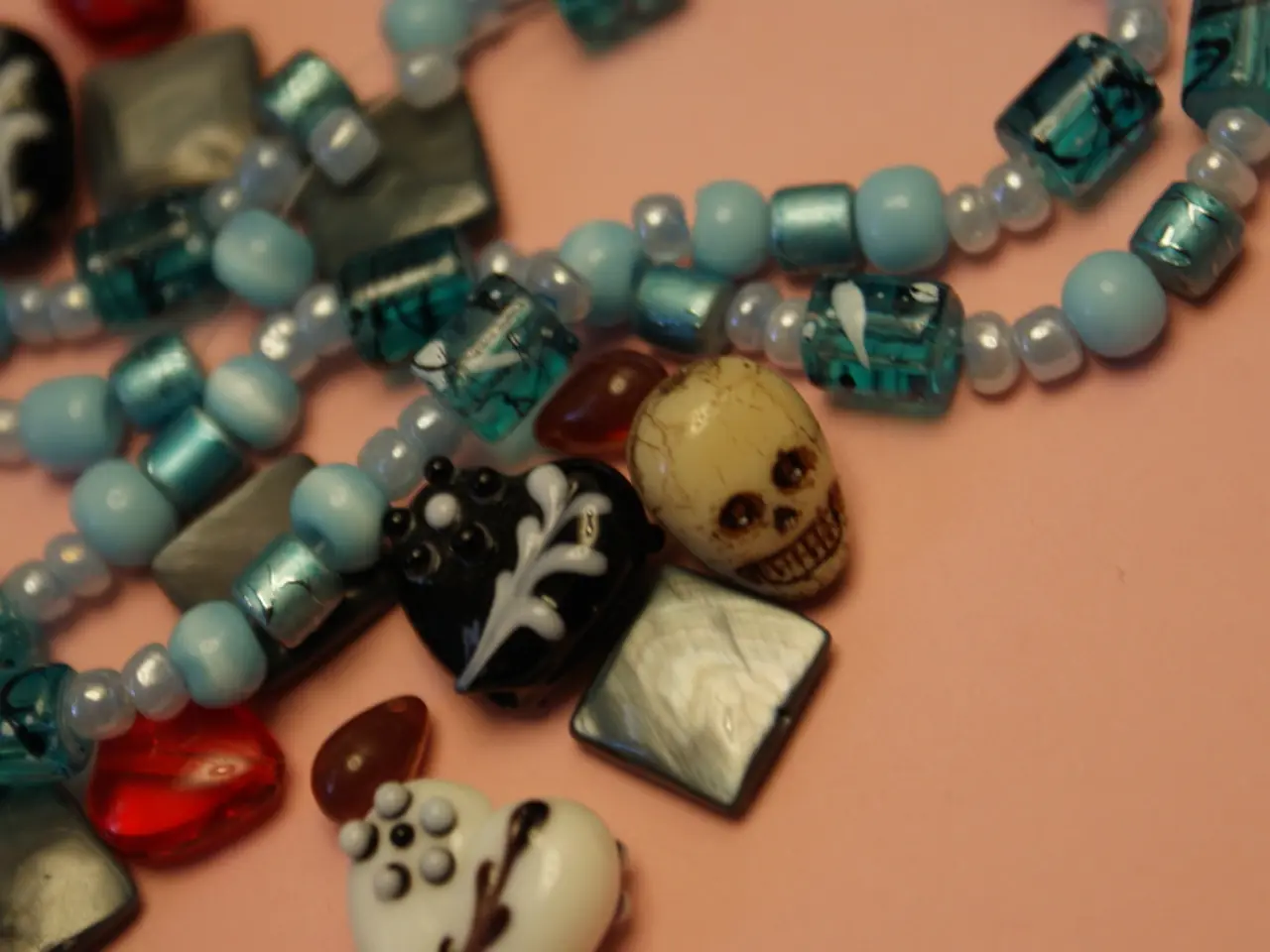The Art Deco Style in Indian Jewelry: A Blend of Elegance and Tradition
**Unveiling the Evolution of Tutti Frutti Jewelry**
The Tutti Frutti style, one of Cartier's most iconic and innovative contributions to jewelry design, emerged in the early 20th century. Characterised by brightly coloured carved gemstones, such as rubies, emeralds, and sapphires, these pieces evoke the lushness of tropical fruits and foliage.
Louis Cartier's artistic journey into this aesthetic was largely influenced by his travels to India, where he was captivated by the bold use of colour and organic motifs in Indian jewellery and textiles. Initially referred to as "feuillages" (foliage) during its creation, the playful "Tutti Frutti" moniker was later adopted in the 1970s.
The Tutti Frutti design was a conscious reaction to the restraint of French Art Deco, embracing asymmetry, organic forms, and a riot of colour, all of which were novel in Western jewelry at the time. These pieces often featured carved sapphire "berries," emerald "leaves," and ruby "petals," sometimes accented with diamonds for extra sparkle.
The Indian influence on Tutti Frutti jewelry is profound. The Cartier family were fascinated by the Mughal tradition of carved gemstones, particularly the practice of engraving floral and fruit motifs into rubies, emeralds, and sapphires. The style also integrated Indo-Persian motifs, further emphasising its multicultural origins.
Interestingly, some Tutti Frutti pieces were commissioned by Indian royalty and incorporated both Indian gemstones and European craftsmanship, bridging two distinct jewelry traditions. This adoption and reinterpretation of exotic elements helped Cartier establish itself as a truly international brand, appealing to a cosmopolitan elite.
Some of the most famous early Tutti Frutti creations include the "Hindu" Necklace, designed for American heiress Daisy Fellowes, and numerous brooches and clips depicting flowers, leaves, and fruits. Tutti Frutti jewelry was favoured by 20th-century style icons, such as Elizabeth Taylor, Barbara Hutton, and Wallis Simpson.
Tutti Frutti jewelry remains a symbol of Cartier's willingness to experiment and its ability to synthesise diverse cultural influences into something entirely new. The style's enduring appeal lies in its exuberant celebration of colour, craftsmanship, and cross-cultural exchange, making it a high point in the history of 20th-century jewelry.
Financial constraints played a significant role in popularising these jewels, as carved stones were less expensive than faceted gems. The distinctive appearance of Tutti Frutti jewels makes them instantly recognisable. In recent years, a gem-set, diamond, and enamel Tutti Frutti bracelet by Cartier, circa 1930, was sold via online auction by Sotheby's for US $1,340,000, far exceeding its estimate of US $800,000.
The combination of exotic Indian designs and emerging gemstone cuts helped to create what was known at the time as "Hindou" jewels, later renamed "Tutti Frutti" in the 1970s. These jewels were frequently set with carved emeralds, rubies, and sapphires and were made for the western market.
A pair of carved emerald bead necklaces, possibly from Jaipur, northwestern India, dating from the late 18th to the early 19th century, were purchased in India in the early 1950s and later sold by Chiswick Auctions in November 2019 for a hammer price of £25,000. The focus of these designs was on the vibrancy of colour, with transparency and clarity taking a backseat to the importance of tone.
The romance and exotic flair of these jewels, first popular in the 1930s, still holds true today.
- In the realm of education and self-development, one can now pursue online gemmology courses to learn about the fascinating history of Tutti Frutti jewelry.
- As fashion-and-beauty enthusiasts admire the vibrant colors and intricate designs of Tutti Frutti jewelry, a diploma in gemmology can provide a deeper understanding of the craftsmanship involved.
- With the popularity of Tutti Frutti jewelry, its unique style has found its way into modern lifestyle trends, inspiring fashion designers to incorporate similar designs into their fashion lines.
- Upon completion of online learning courses in gemmology, one might find themselves appreciating the value of Tutti Frutti jewelry even more, as they gain a newfound respect for the skill and artistry behind these lavish diadems, set with diamonds and carved gemstones such as rubies, emeralds, and sapphires.




